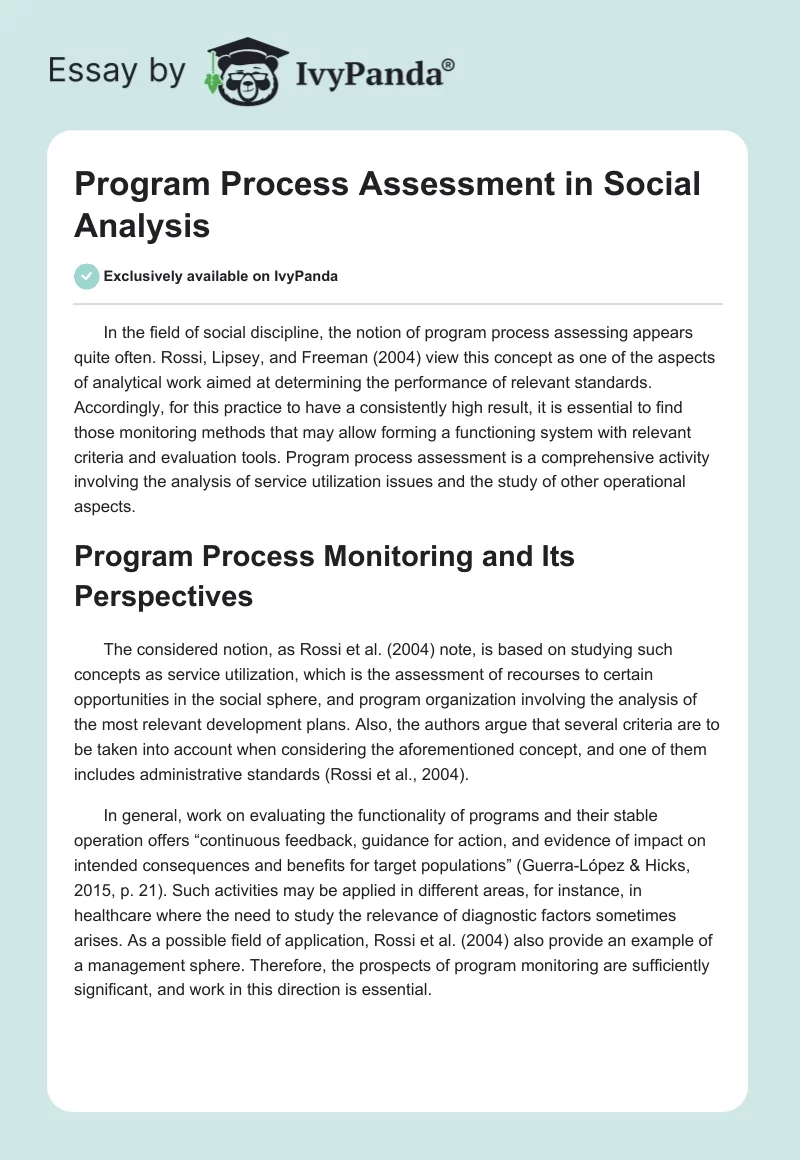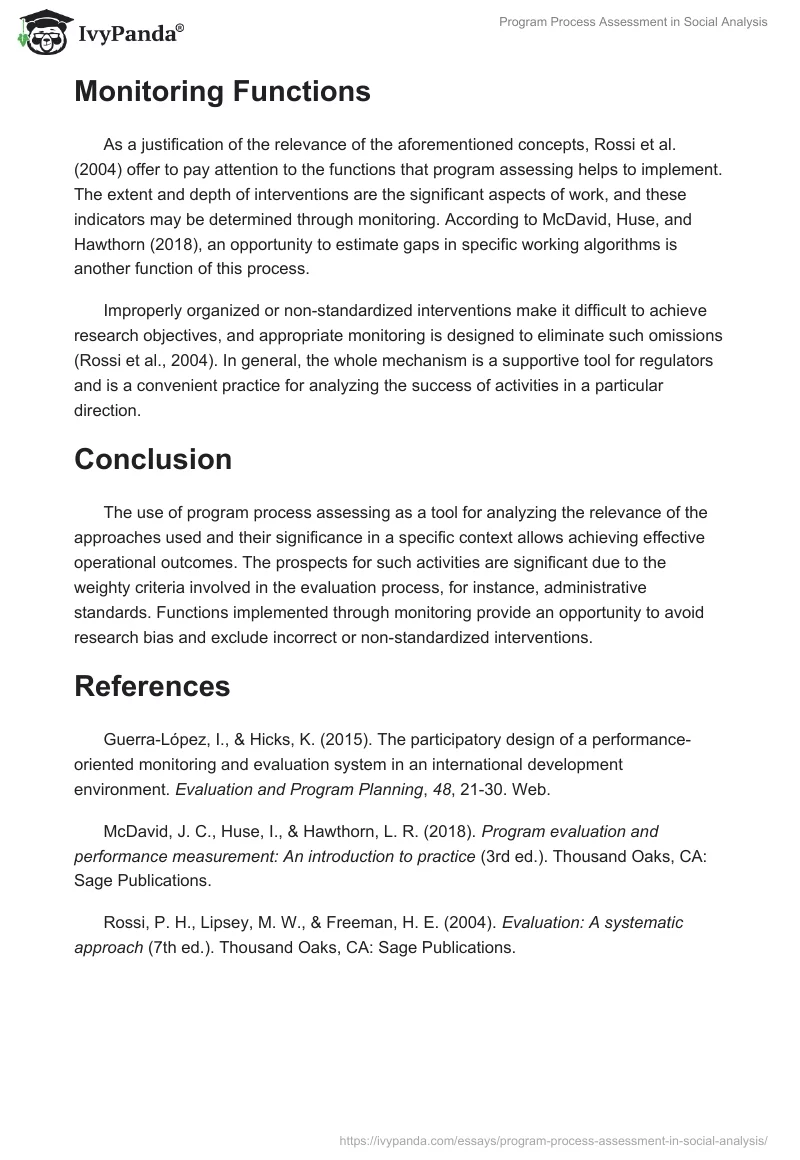In the field of social discipline, the notion of program process assessing appears quite often. Rossi, Lipsey, and Freeman (2004) view this concept as one of the aspects of analytical work aimed at determining the performance of relevant standards. Accordingly, for this practice to have a consistently high result, it is essential to find those monitoring methods that may allow forming a functioning system with relevant criteria and evaluation tools. Program process assessment is a comprehensive activity involving the analysis of service utilization issues and the study of other operational aspects.
Program Process Monitoring and Its Perspectives
The considered notion, as Rossi et al. (2004) note, is based on studying such concepts as service utilization, which is the assessment of recourses to certain opportunities in the social sphere, and program organization involving the analysis of the most relevant development plans. Also, the authors argue that several criteria are to be taken into account when considering the aforementioned concept, and one of them includes administrative standards (Rossi et al., 2004).
In general, work on evaluating the functionality of programs and their stable operation offers “continuous feedback, guidance for action, and evidence of impact on intended consequences and benefits for target populations” (Guerra-López & Hicks, 2015, p. 21). Such activities may be applied in different areas, for instance, in healthcare where the need to study the relevance of diagnostic factors sometimes arises. As a possible field of application, Rossi et al. (2004) also provide an example of a management sphere. Therefore, the prospects of program monitoring are sufficiently significant, and work in this direction is essential.
Monitoring Functions
As a justification of the relevance of the aforementioned concepts, Rossi et al. (2004) offer to pay attention to the functions that program assessing helps to implement. The extent and depth of interventions are the significant aspects of work, and these indicators may be determined through monitoring. According to McDavid, Huse, and Hawthorn (2018), an opportunity to estimate gaps in specific working algorithms is another function of this process.
Improperly organized or non-standardized interventions make it difficult to achieve research objectives, and appropriate monitoring is designed to eliminate such omissions (Rossi et al., 2004). In general, the whole mechanism is a supportive tool for regulators and is a convenient practice for analyzing the success of activities in a particular direction.
Conclusion
The use of program process assessing as a tool for analyzing the relevance of the approaches used and their significance in a specific context allows achieving effective operational outcomes. The prospects for such activities are significant due to the weighty criteria involved in the evaluation process, for instance, administrative standards. Functions implemented through monitoring provide an opportunity to avoid research bias and exclude incorrect or non-standardized interventions.
References
Guerra-López, I., & Hicks, K. (2015). The participatory design of a performance-oriented monitoring and evaluation system in an international development environment. Evaluation and Program Planning, 48, 21-30. Web.
McDavid, J. C., Huse, I., & Hawthorn, L. R. (2018). Program evaluation and performance measurement: An introduction to practice (3rd ed.). Thousand Oaks, CA: Sage Publications.
Rossi, P. H., Lipsey, M. W., & Freeman, H. E. (2004). Evaluation: A systematic approach (7th ed.). Thousand Oaks, CA: Sage Publications.


